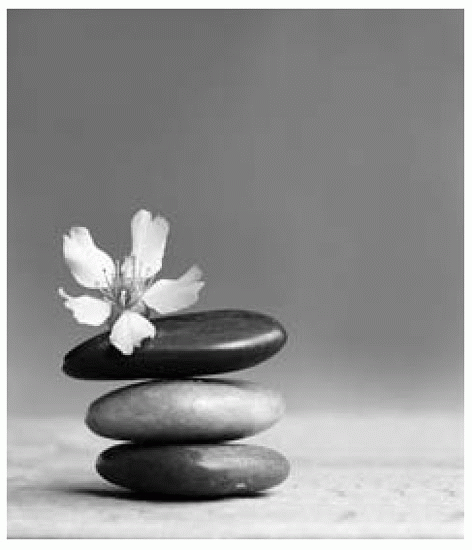|
Discuss ways holistic philosophy and theoretical frameworks are reflected in holistic nursing research (HNR) priorities.
Discuss the recent NCCAM strategic plan and its impact on holistic nursing research.
Discuss the complexity of determining adequate evidence for holistic nursing research.
Explore the challenges for holistic nursing research.
Compare and contrast a variety of research methods.
Explore how holistic nursing research questions can be developed in your clinical setting.
Read a research article related to a modality you use in your holistic nursing practice.
Collect data from various clients who are participating in some form of holistic therapy to determine their subjective evaluations of the experience and outcome.
Discuss ways to enhance practice through holistic research with colleagues and nurse researchers.
Devise a holistic nursing research question and propose a method of research that would best explore that question.
Contemplate how a conceptual framework of holism is the foundation for holistic nursing research and practice.
Clarify your own personal definition of holism and holistic nursing.
Consider that you do research every day in clinical practice as you assess patients and their situations, make diagnoses, plan and follow through on actions, and evaluate those actions.
Plan time to learn how to form a research question.
Attend a research conference or a section on research at the American Holistic Nursing Association (AHNA) annual conference or at a local networking meeting.
process of data collection and interpretation of results.
the independent variable are causing the results in the dependent variable. External validity ensures that the results are generalizable to other populations, settings, and times and depends on internal validity.
of qualitative, quantitative, and mixed methods designs, other approaches are discussed.
including the pattern of letting the past go in order to move on for parents of persons with bipolar illness11 and recognizing life patterns in women with multiple sclerosis.12 Measurement tools are beginning to appear to document behaviors that illustrate caritas in Jean Watson’s evolving Theory of Caring.13,14
Empirical: Objective, logical, and positivistic science
Ethical: Obligations, what should be done in a given situation; what is acceptable practice; requires openness to differences in philosophical positions18p12-13
Personal: Self-knowledge; determined by ability to self-actualize; comfort with ambiguity; commitment to patience and self-care
Aesthetic: Artful knowledge; abstract; defies formal description and measurement; understanding of subjective experiences; creative pattern
Particulate-deterministic. Reductionist, concrete 2. Interactive-integrative. Reality is multidimensional and contextual; reciprocal relationships
Unitary-transformative. Human beings are unitary, evolving, self-organizing fields, and defined by pattern; highly abstract19
process in which one’s philosophical stance, values, assumptions, biases, and decision-making process become more evident. The third attribute for scholarship is caring. Drawing from Jean Watson,22 Mariano explains that our research should be ethical, moral, and based on pressing human needs. We must be intellectually empathic, just, and fair minded. Finally, she states that true scholars have a sense of humor. We should expect and embrace the unexpected, keep our goals and accomplishments in perspective, and be willing to admit when we are wrong.21
Advance the science and practice of symptom management.
Develop effective, practical, personalized strategies for promoting health and well-being.
TABLE 34-1 Summary: Ways of Knowing Theoretical Frameworks
Research Approach
Carper’s Ways of Knowing:
Fawcett’s Paradigms
Wilber’s Integral Model
AHNA’s Way of Knowing
Mariano’s Attributes of Scholarship
Quantitative:
RCT, EBP, experimental, quasi-experimental, descriptive
Empirical
Objective, logical, positivistic; provides measurement and generalizability
Particular-Deterministic:
Reductionist, concrete
Objective “it,” material body, biochemistry, behaviors, scientific observations on time and space
Rational/Scientific
Quantitative:
Descriptive, correlational
Mixed methods
Interactive and Integrative:
Multidimensional reality, contextual, reciprocal relationships
Objective “its,” collective exterior, social systems, regulatory structures
Rational/Scientific
Being Wide Awake:
Thinking about our place in humanity, open to possibility, attentive to others and conscious of our evolving experiences, posing questions from descriptive data
TRANSITION
TRANSITION
TRANSITION
TRANSITION
TRANSITION
TRANSITION
Qualitative:
Postmodern feminist mixed method approaches
Ethical:
Obligation about what should be done, open to different philosophies
Interactive and Integrative or Unitary Transformative:
Human beings are unitary, evolving self-organizing fields defined by patterns
Subjective “I” and subjective “we,” imagination, internal experience
Intuition
Caring:
Ethics, fair mindedness, human and society needs, intellectually empathic
Qualitative:
Reflective, transpersonal
Mixed methods
Personal:
Self-knowledge, ability to self-actualize, comfort with ambiguity, commitment to patience and self-care
Unitary Transformative:
Human beings are unitary, evolving self-organizing fields defined by patterns
Subjective “I” and subjective “we,” shared values and meaning
Reflective:
Introspection, displays one’s thought process, values, biases, ethics, etc., to others; critical thinking
Qualitative:
Transpersonal, aesthetic creative approaches
Aesthetic:
Artful knowledge, abstract, defies formal description, creative
Unitary Transformative:
Human beings are unitary, evolving self-organizing fields defined by patterns
Subjective “I” and subjective “we,” changing states of consciousness and emphasis
Aesthetic
Humor:
Expect and embrace the unexpected, willingness to admit when we are wrong or failed
Enable better evidence-based decision making regarding CAM use and its integration into health care and health promotion.
Basic science: Investigates biological effects and mechanisms of action; it clarifies hypotheses and answers the question: “How does it work?”
Translational research: May identify markers of biological effect; develops and validates measures of outcome; develops algorithms and preliminary clinical efficacy; estimates sample size for future studies. Answers the question: “Can it be studied in people?”
Efficacy studies: Highly controlled studies to determine specific effects of an intervention. Answers the question, “What are the specific effects?”
Effectiveness and outcome studies: What is the usefulness and safety of the intervention in general populations and healthcare settings? Answers the question: “Does it work in the real world?”
Advance research on mind and body interventions, practices, and disciplines.
Advance research on CAM natural products.
Increase understanding of real-world patterns and outcomes of CAM use and its integration into health care and health promotion.
Improve the capacity of the field to carry out rigorous research.
Develop and disseminate objective, evidencebased information on CAM interventions.
Stay updated, free articles. Join our Telegram channel

Full access? Get Clinical Tree



